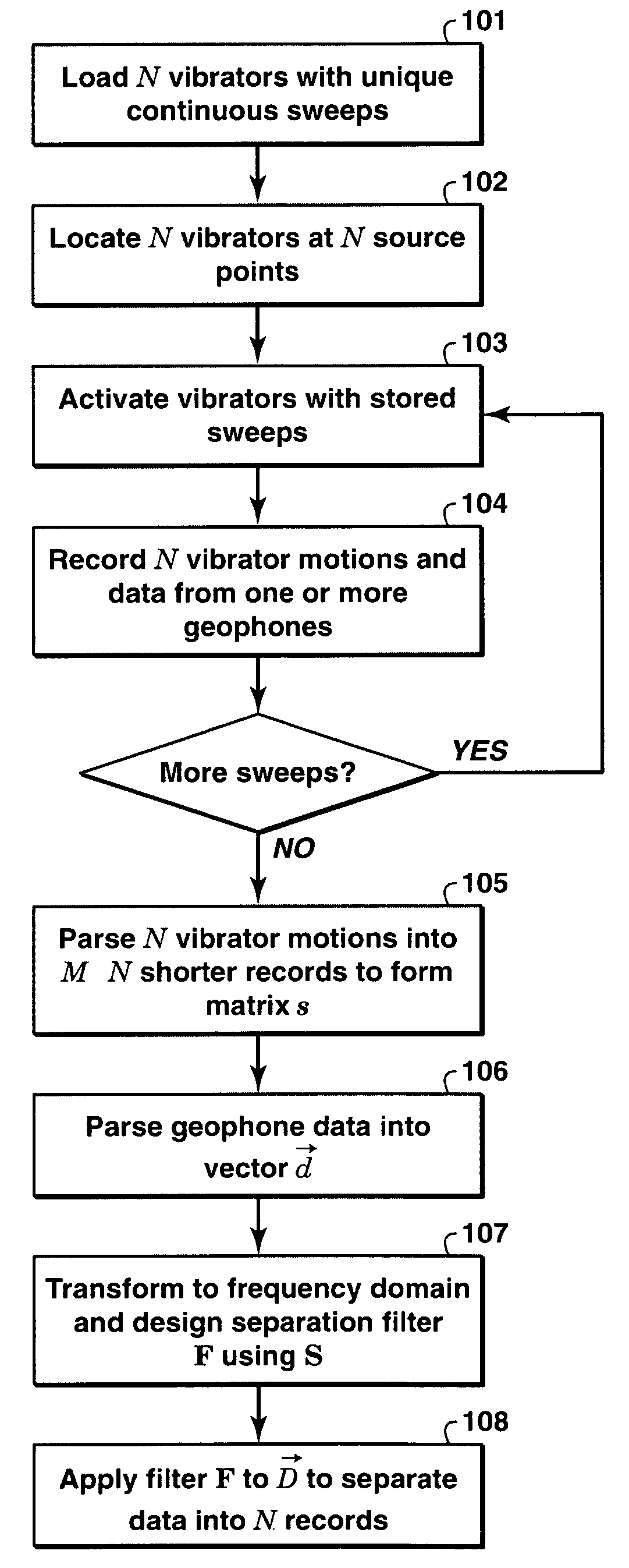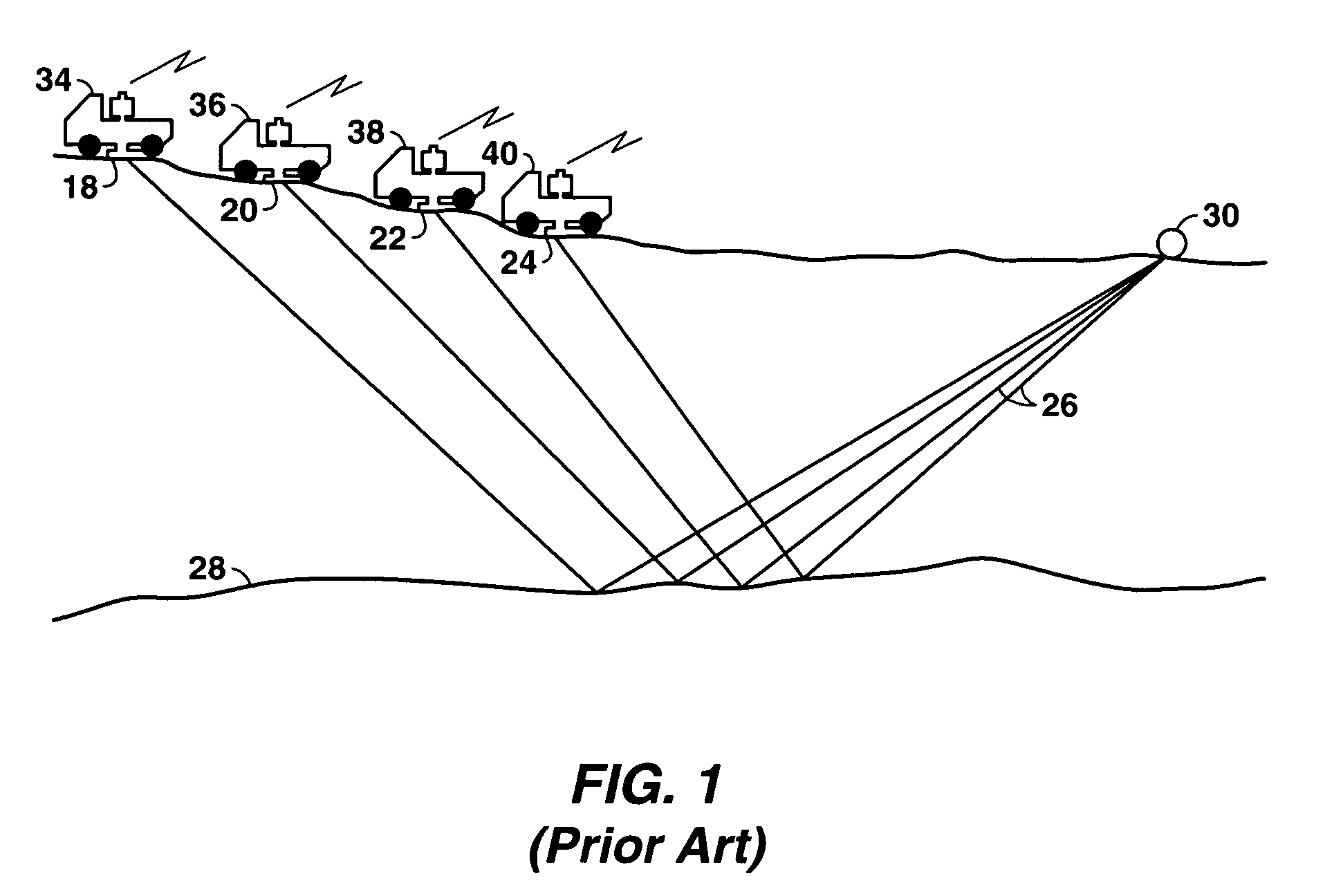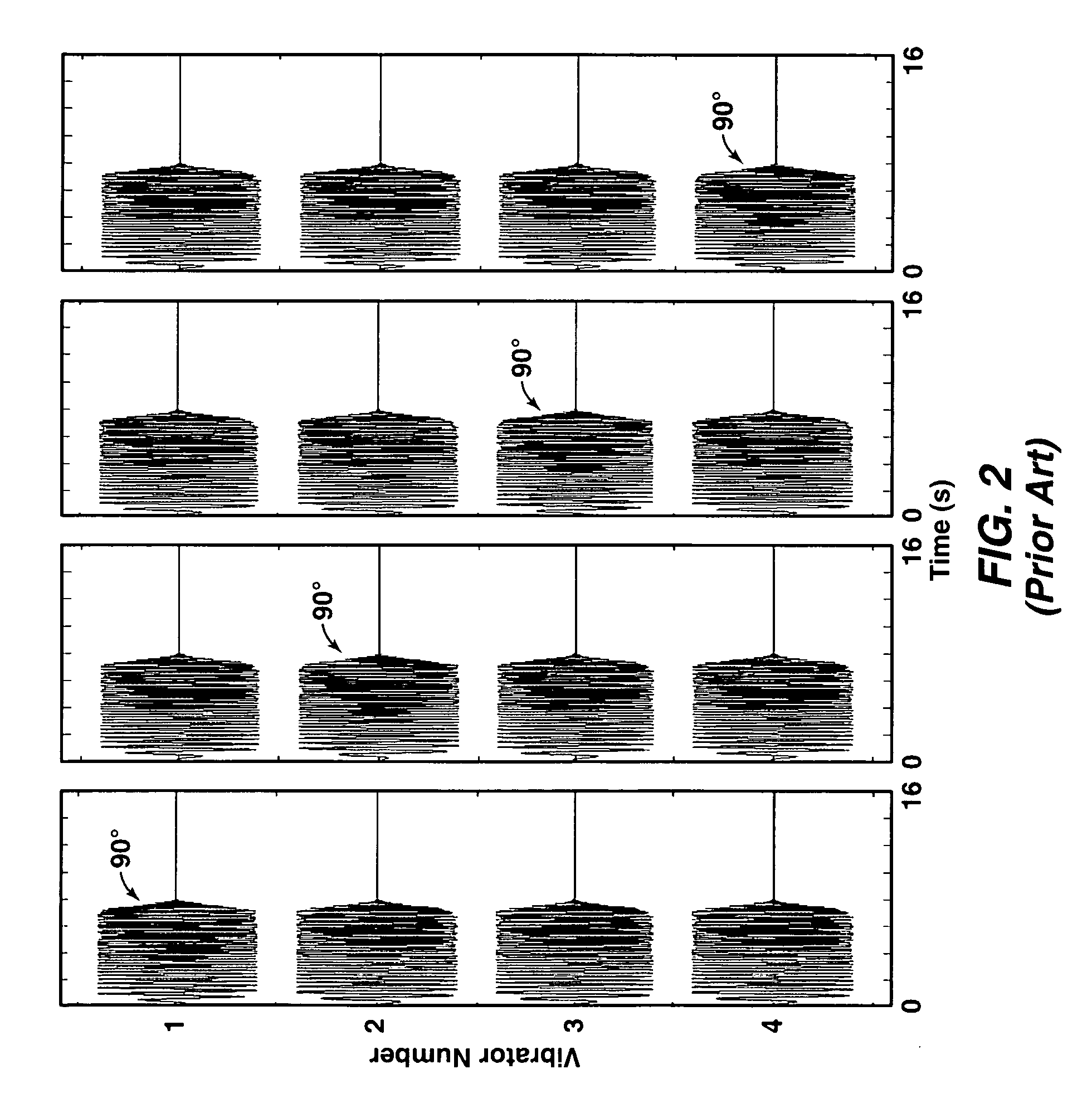Method for continuous sweeping and separation of multiple seismic vibrators
a vibrator and sweeping technology, applied in the field of seismic data acquisition, can solve the problems of harmonic ghosts, affecting the accuracy of final processed data, and many problems known to exist in conventional vibrator technology, and achieve the effect of further reducing harmonic ghosts
- Summary
- Abstract
- Description
- Claims
- Application Information
AI Technical Summary
Benefits of technology
Problems solved by technology
Method used
Image
Examples
examples
[0035]FIG. 6 and FIG. 7 compare the first 2.5 seconds of model data after the process of separation and inversion using the conventional HFVS method (FIG. 6) and the method of the present invention (FIG. 7). The model data are generated using 51 receivers, 400 feet apart. Four sources are located at distances of 5000, 8333, 11666, and 15000 feet from the first receiver. The data for each source location were convolved with actual vibrator signatures from field measurements and combined to simulate simultaneous acquisition of the four sources. The vibrator sweep for HFVS was an 8-s linear sweep from 8 to 128 Hz. The vibrator sweep for the present invention is a 32-s sweep composed of four 8-s segments. The horizontal axis in each figure displays receiver location, by source. The results after separation and inversion of the model data show little difference between the two methods, and both perfectly separate the reflection data for the 4 sources.
[0036]FIG. 8 shows the separated and ...
PUM
 Login to View More
Login to View More Abstract
Description
Claims
Application Information
 Login to View More
Login to View More - R&D
- Intellectual Property
- Life Sciences
- Materials
- Tech Scout
- Unparalleled Data Quality
- Higher Quality Content
- 60% Fewer Hallucinations
Browse by: Latest US Patents, China's latest patents, Technical Efficacy Thesaurus, Application Domain, Technology Topic, Popular Technical Reports.
© 2025 PatSnap. All rights reserved.Legal|Privacy policy|Modern Slavery Act Transparency Statement|Sitemap|About US| Contact US: help@patsnap.com



